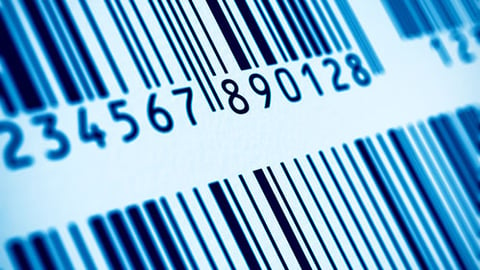GS1 US Marks 50-Year Barcode ‘Scanniversary’
GS1 US, the not-for-profit information standards organization that administers the Universal Product Code (UPC) barcodes, has marked a half-century since the debut of the first barcode scan – known humorously as the “Scanniversary.” On June 26, 1974, a 10-pack of Wrigley's chewing gum sporting a UPC was scanned at a Marsh Supermarket in Troy, Ohio. Today, the barcode is used to identify more than 1 billion products and is scanned more than 10 billion times daily, according GS1 US.
While the UPC has aided price lookup at point of sale for 50 years, new two-dimensional (2D) barcodes, such as QR codes powered by GS1, are appearing on product packaging to offer shoppers detailed product information. According to a 2024 GS1 US consumer survey, 77% of consumers believe that product information is important when making a purchase and 79% are more likely to buy items with a scannable barcode/QR code (via smartphone) that gives them the information they want.
[RELATED: The Greatest Stories in Grocery From Last 100 Years]
Through global industry-wide collaboration facilitated by GS1, brands are starting to transition from UPCs to new 2D barcodes, or QR codes, on product packaging, and retailers have set a target date to accept them at checkout by 2027 – a GS1 US initiative known as Sunrise 2027. These GS1 web-enabled barcodes combine the capability and standards of the UPC and QR code to work at cash registers, provide rich product data from the brand that shoppers can access with a smartphone scan, and help drive retail inventory management, visibility and traceability.
Further, 20 of the world’s biggest companies – among them Procter & Gamble , L’Oreal, and Nestlé – have signed a global joint statement calling for the adoption of the next-generation barcodes.
“While we honor the legacy of the iconic UPC barcode over the last half-century, we must support today’s digital world characterized by elevated consumer expectations and increasingly complex supply chains,” noted Bob Carpenter, president and CEO of Ewing, N.J.-based GS1 US. “In this dynamic landscape, innovation is flourishing with the growing adoption of new 2D barcodes. These QR codes, powered by GS1, can provide a single gateway to help consumers understand product composition, sustainability efforts and recalls while aiding retailers with inventory control, on-demand discounting, couponing and more. The opportunities to power consumer confidence and connect with brands while also serving the business needs of industry are truly limitless.”
Retailers have also shown their support for 2D barcodes.
“In addition to the shopper engagement opportunities that 2D barcodes provide, these data-rich QR codes will also better support our inventory management operations so that we can keep our shelves stocked with the products our customers want most,” said Dave DeLaus, SVP and CIO at Rochester, N.Y.-based Wegmans Food Markets Inc. “As an early adopter, we’re prioritizing this industry transition and are pressure-testing our capabilities to ensure readiness.”
“The shift to 2D barcodes will be key to educating consumers in store as they consider products that best meet the needs of their families,” observed Dave Bornmann, SVP, product business development at Lakeland, Fla.-based Publix Super Markets. “Industry coming together to make this transition while following barcode placement standards will be the gateway to information our shoppers increasingly want at the point of decision.”
“I started out in the supermarket business as a part-time courtesy clerk the year the barcode was introduced and saw first-hand how it improved store efficiency and enhanced the customer experience,” added Mike Stigers, president of Keasbey, N.J.-based Wakefern Food Corp. “It’s so exciting to mark 50 years of progress with the ‘Scanniversary’ and, as a GS1 US board member, help guide the industry’s transition to 2D barcodes. The potential to provide so much important product information will continue to help retailers, manufacturers and consumers.”
According to GS1 US, it will continue to facilitate industry collaboration on 2D barcode technology and its adoption during the Sunrise 2027 transition and beyond.
Employee-owned and -operated Publix has 255,000-plus associates and more than 1,300 supermarkets in Florida, Georgia, Alabama, South Carolina, Tennessee, North Carolina, Virginia and Kentucky. The company is No. 12 on The PG 100, Progressive Grocer’s 2024 list of the top food and consumables retailers in North America. PG also named the company one of its Retailers of the Century. Family-owned Wegmans operates more than 100 stores along the East Coast. The company is No. 39 on The PG 100 and also one of the publication’s 10 Most Sustainable Grocers for 2024. Wakefern is the nation’s largest retailer-owned cooperative. The company comprises nearly 50 members that independently own and operate 365-plus supermarkets under the ShopRite, Price Rite Marketplace, The Fresh Grocer, Dearborn Market, Gourmet Garage and Fairway Market banners. Wakefern is No. 31 on The PG 100.






